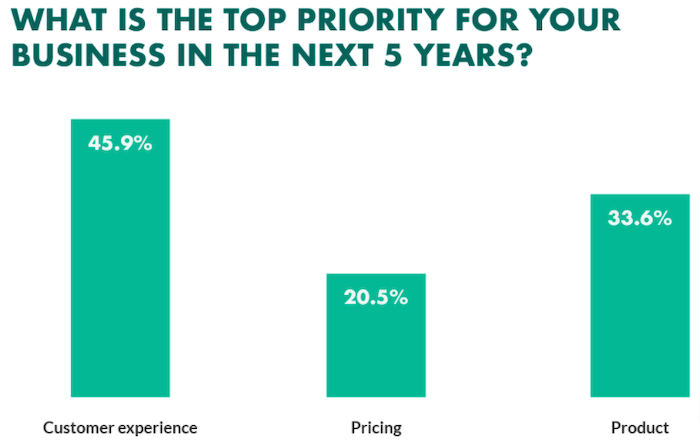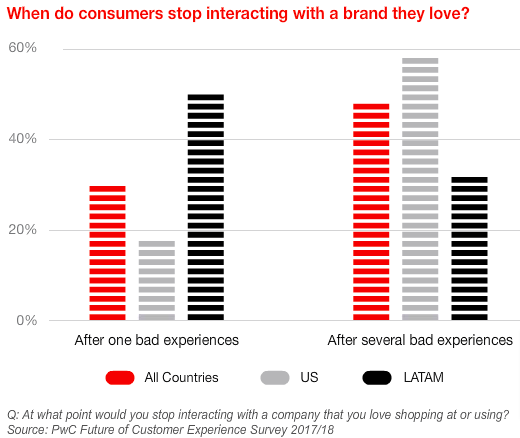Customer Satisfaction: Benefits, Examples & Importance

By Neil Patel
Customer satisfaction is crucial to the success of your business. No matter how innovative your product or competitive your pricing, if your customers are ultimately unhappy, they’re not going to stick around.
As such, it’s no surprise 45.9 percent of businesses surveyed in 2020 named customer experience as their number one priority over the next five years:

What exactly do we mean by “customer satisfaction?” Why is it so important, and what can you do to improve it? Read on to find out.
What Is Customer Satisfaction?
Customer satisfaction is a measure of how people feel when interacting with your brand. It can be influenced by any number of factors, such as:
- perceived product quality
- perceived product value
- convenience
- customer expectations
- communication
- complaint handling
Every brand, no matter how successful, wants to improve customer satisfaction. To do that, they need to define two things:
- who their customers are
- what it takes to satisfy them
Part one isn’t as simple as it sounds. Let’s take the example of a hospital. It might have two distinct customer bases:
- the patients it treats
- the insurance companies it sells patient data to
Clearly, those two audiences have very different goals, and keeping them happy requires two vastly different approaches. To make matters even more complicated, satisfying one audience may sometimes be detrimental to the other’s happiness.
4 Benefits of Customer Satisfaction
Customer satisfaction is more than just a “nice to have.” Getting it right has specific, tangible benefits, including:
1. Increase Brand Loyalty
Never take your customers for granted.
According to PwC, 59 percent of U.S. consumers who love a product or brand would ditch it after several poor experiences. More concerningly, almost one in five would do so after a single bad experience.

On the flip side, if you do everything in your power to keep customers happy, it stands to reason they’ll be more likely to stick around for the long term.
2. Boost Trust
According to Edelman, 81 percent of consumers say brand trust is a deal-breaker or a deciding factor in their purchase decisions.
Yet trust is pretty thin on the ground, with just 34 percent of consumers saying they trust most of the brands they use or buy from.
How do you make your brand more trustworthy? One way is to improve satisfaction. According to a study from Eastern University Sri Lanka, customer satisfaction logically precedes customer trust; those two things rarely exist in isolation.
3. Attract Positive Word of Mouth
Word-of-mouth marketing is extremely valuable.
To give just one example, 87 percent of consumers read online reviews for local businesses in 2020, up from 81 percent in 2019.
Unfortunately, consumers are significantly more likely to share negative reviews than they are positive ones. …read more
Source:: Kiss Metrics Blog








